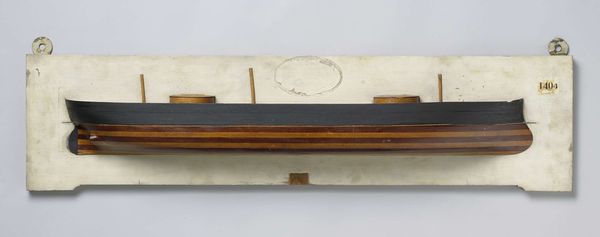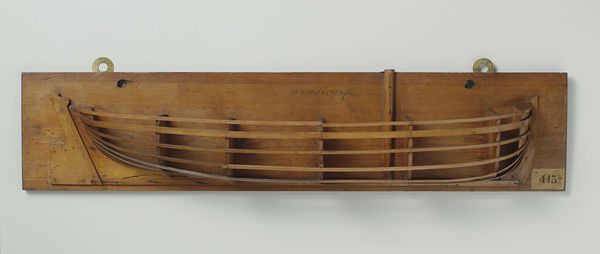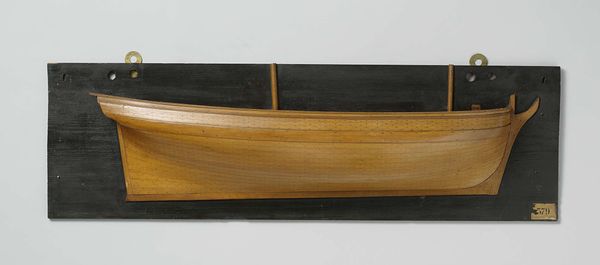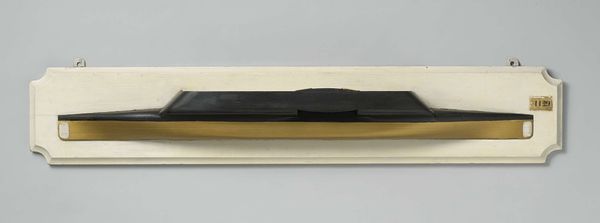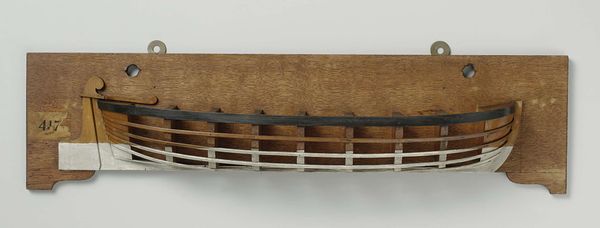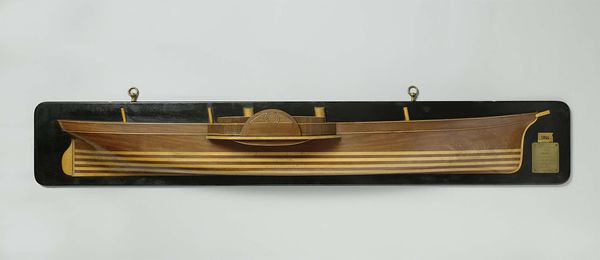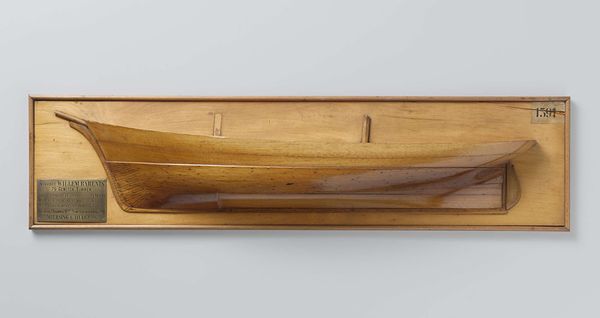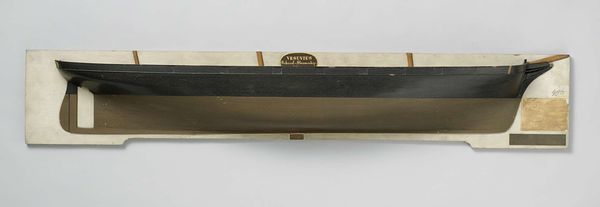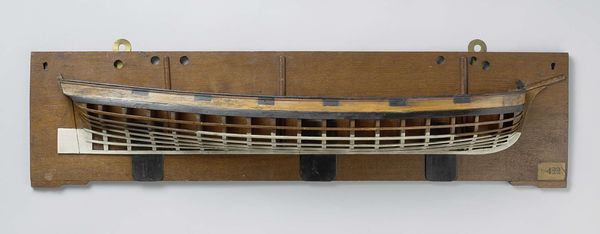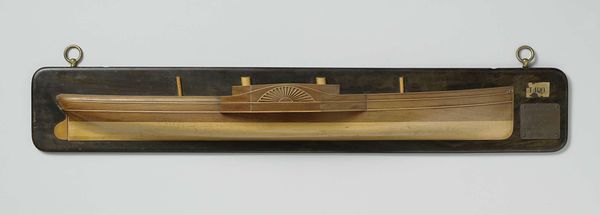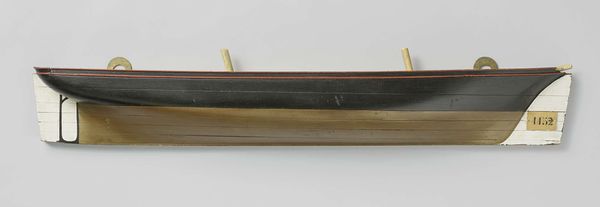
sculpture, wood
#
sculpture
#
sculpture
#
wood
Dimensions: height 28 cm, width 150 cm, depth 12.5 cm
Copyright: Rijks Museum: Open Domain
Editor: We're looking at the "Half Model of a Screw Steamer," made around 1876 or 1877 by the Koninklijke Fabriek voor Stoom- en andere Werktuigen. It’s a wood sculpture, quite elegant in its simplicity. The craftsmanship is apparent. How do you interpret the significance of displaying such a utilitarian object in an artistic context? Curator: This half-model embodies a fascinating intersection of art, industry, and national pride. In the 19th century, shipbuilding was a symbol of technological advancement and colonial power. Presenting it in such a format elevates it from merely a functional design to a statement of progress and Dutch engineering prowess. Consider where this piece might have been displayed originally - perhaps in a company headquarters or even at a world's fair? Editor: That makes sense. It's not just about the boat; it's about what the boat represents at the time. Does its function as a prototype change its perception? Curator: Precisely. As a prototype, it also represents potential. It's an advertisement, if you will, showcasing the manufacturer's capabilities. Think about how these models might have been used to secure funding or contracts. The very act of framing it transforms a practical tool into a cultural artifact. We must ask ourselves, what narratives were being promoted, and for whom? Editor: So, it's like a three-dimensional business card, really. The transition of utilitarian objects into museum display highlights a shift in perception, I guess. Curator: Exactly! And this transition says so much about our shifting values regarding labor, progress, and the complex relationship between art and commerce. It is about acknowledging and, at times, celebrating industries pivotal in the evolution of society. Editor: That's a perspective I hadn't considered. I thought of it as purely aesthetic, but I see that this piece acts as both a functional display model and also historical propaganda. Curator: The layers are always there.
Comments
No comments
Be the first to comment and join the conversation on the ultimate creative platform.
